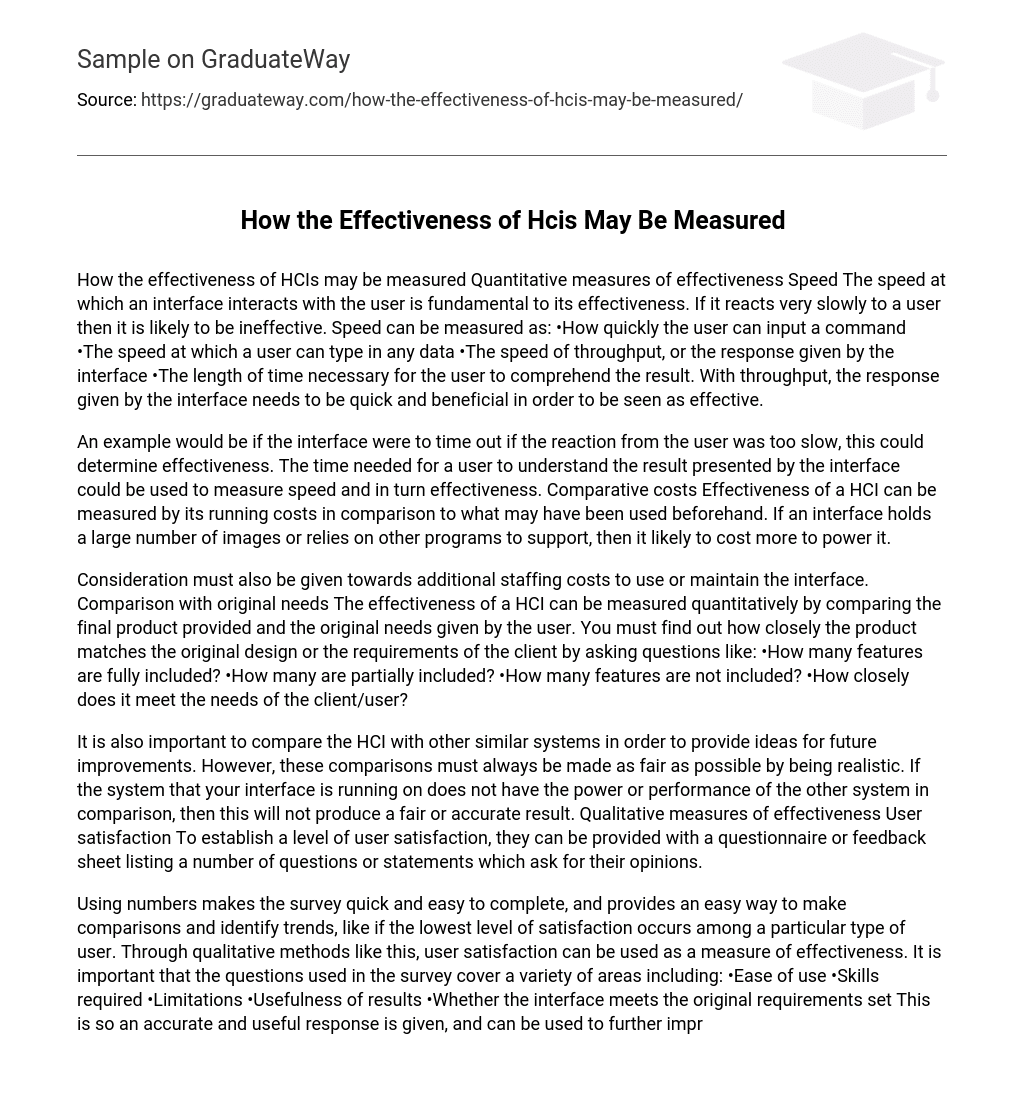How the effectiveness of HCIs may be measured Quantitative measures of effectiveness Speed The speed at which an interface interacts with the user is fundamental to its effectiveness. If it reacts very slowly to a user then it is likely to be ineffective. Speed can be measured as: •How quickly the user can input a command •The speed at which a user can type in any data •The speed of throughput, or the response given by the interface •The length of time necessary for the user to comprehend the result. With throughput, the response given by the interface needs to be quick and beneficial in order to be seen as effective.
An example would be if the interface were to time out if the reaction from the user was too slow, this could determine effectiveness. The time needed for a user to understand the result presented by the interface could be used to measure speed and in turn effectiveness. Comparative costs Effectiveness of a HCI can be measured by its running costs in comparison to what may have been used beforehand. If an interface holds a large number of images or relies on other programs to support, then it likely to cost more to power it.
Consideration must also be given towards additional staffing costs to use or maintain the interface. Comparison with original needs The effectiveness of a HCI can be measured quantitatively by comparing the final product provided and the original needs given by the user. You must find out how closely the product matches the original design or the requirements of the client by asking questions like: •How many features are fully included? •How many are partially included? •How many features are not included? •How closely does it meet the needs of the client/user?
It is also important to compare the HCI with other similar systems in order to provide ideas for future improvements. However, these comparisons must always be made as fair as possible by being realistic. If the system that your interface is running on does not have the power or performance of the other system in comparison, then this will not produce a fair or accurate result. Qualitative measures of effectiveness User satisfaction To establish a level of user satisfaction, they can be provided with a questionnaire or feedback sheet listing a number of questions or statements which ask for their opinions.
Using numbers makes the survey quick and easy to complete, and provides an easy way to make comparisons and identify trends, like if the lowest level of satisfaction occurs among a particular type of user. Through qualitative methods like this, user satisfaction can be used as a measure of effectiveness. It is important that the questions used in the survey cover a variety of areas including: •Ease of use •Skills required •Limitations •Usefulness of results •Whether the interface meets the original requirements set This is so an accurate and useful response is given, and can be used to further improve the interface if necessary.
Comparison with other systems In the survey, you could also ask the user to make a comparison with any other similar systems they have used. It may be possible to also include an open-ended question in order to get their opinion on this system compared to an older or previous version. For example, ‘in what ways is the new system better/worse than the old one? ’ would help with your evaluation as the user will then provide qualitative information. This can then be used to measure and improve effectiveness of the HCI.





